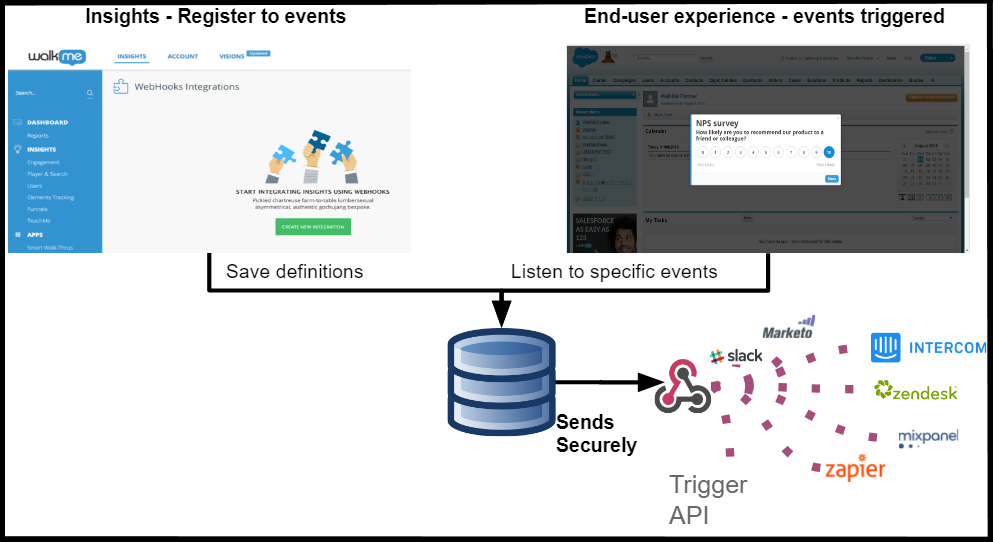Welcome to the
WalkMe Help Center
Please log in to continue

Please log in to continue

Webhooks (AKA callbacks) allow you to build WalkMe directly into your workflows by triggering 3rd party APIs and/or adding WalkMe Event data into your analytics platform.
API integrations are done at regular intervals because they are often resource-intensive and capped by 3rd party tools. While this may be fine for updating large data sets, time-sensitive data may be delayed and even outdated by the time it's delivered.
Webhooks deliver real-time WalkMe Event information to your system of choice, triggered by the event itself. This means you receive information with no delay, so your teams can take immediate action informed by time-sensitive information.
Webhooks securely transfer data using server-to-server calls, with no development work required. WalkMe webhooks support any HTTP calls in GET or POST methods. The payload must be in JSON.
Webhook use cases include the following:
In Insights, you can register specific WalkMe Events and set up webhooks.
When your end-users interact with your registered WalkMe Events in your application, WalkMe sends event notifications to an internal WalkMe server.
The internal WalkMe server then populates calls to the destination system(s) that you identified when configuring your webhooks.

Visit our article How To Send WalkMe Event Data To 3rd Party Systems Using Webhooks to learn how!